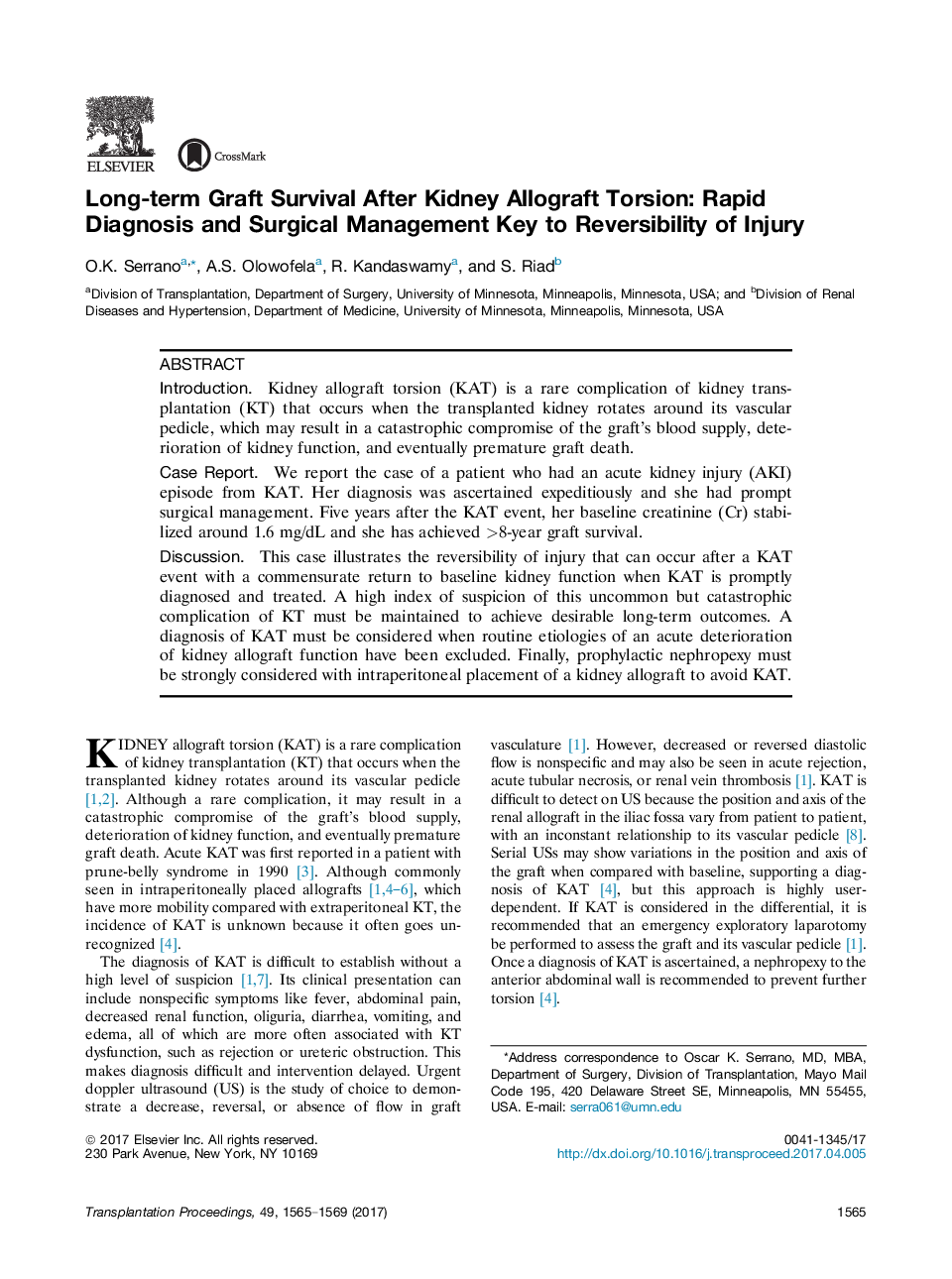| Article ID | Journal | Published Year | Pages | File Type |
|---|---|---|---|---|
| 5728735 | Transplantation Proceedings | 2017 | 5 Pages |
â¢KAT is a rare, but catastrophic, complication of KT.â¢Long-term outcomes after an acute KAT event are unknown.â¢This is the first case report that describes survival beyond 5 years after a KAT event.â¢This case illustrates the potential reversibility of a KAT insult, with the potential of long-term survival of the renal allograft.
IntroductionKidney allograft torsion (KAT) is a rare complication of kidney transplantation (KT) that occurs when the transplanted kidney rotates around its vascular pedicle, which may result in a catastrophic compromise of the graft's blood supply, deterioration of kidney function, and eventually premature graft death.Case ReportWe report the case of a patient who had an acute kidney injury (AKI) episode from KAT. Her diagnosis was ascertained expeditiously and she had prompt surgical management. Five years after the KAT event, her baseline creatinine (Cr) stabilized around 1.6 mg/dL and she has achieved >8-year graft survival.DiscussionThis case illustrates the reversibility of injury that can occur after a KAT event with a commensurate return to baseline kidney function when KAT is promptly diagnosed and treated. A high index of suspicion of this uncommon but catastrophic complication of KT must be maintained to achieve desirable long-term outcomes. A diagnosis of KAT must be considered when routine etiologies of an acute deterioration of kidney allograft function have been excluded. Finally, prophylactic nephropexy must be strongly considered with intraperitoneal placement of a kidney allograft to avoid KAT.
